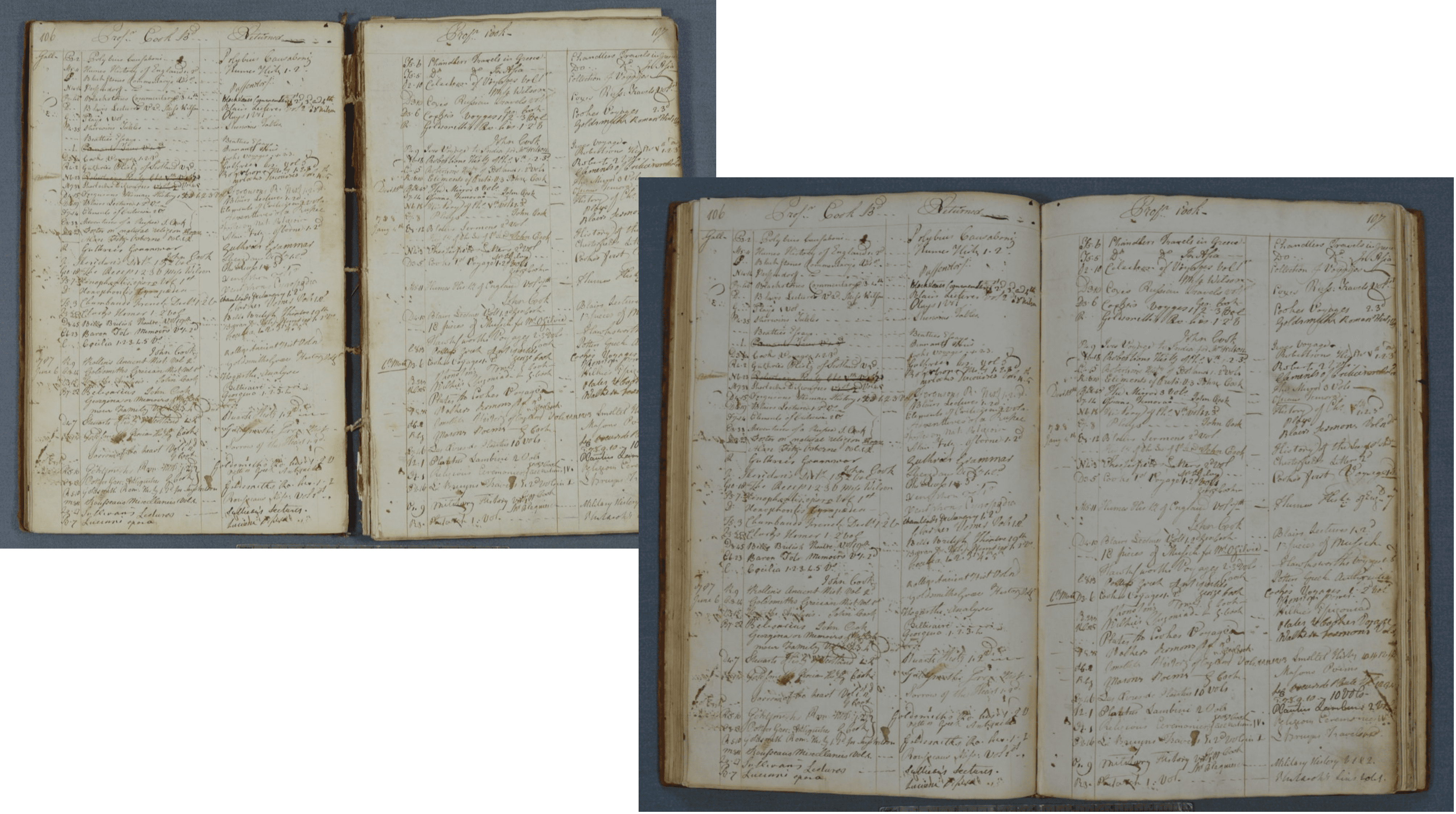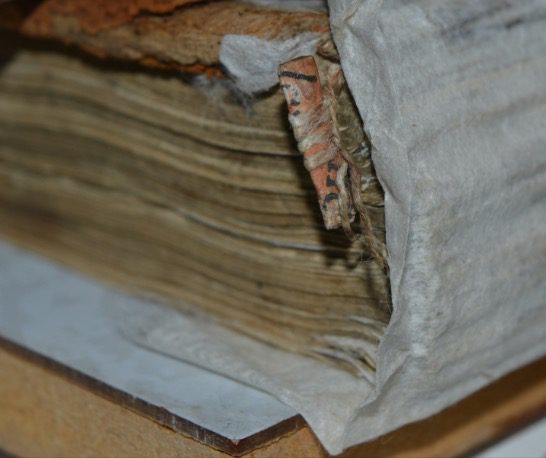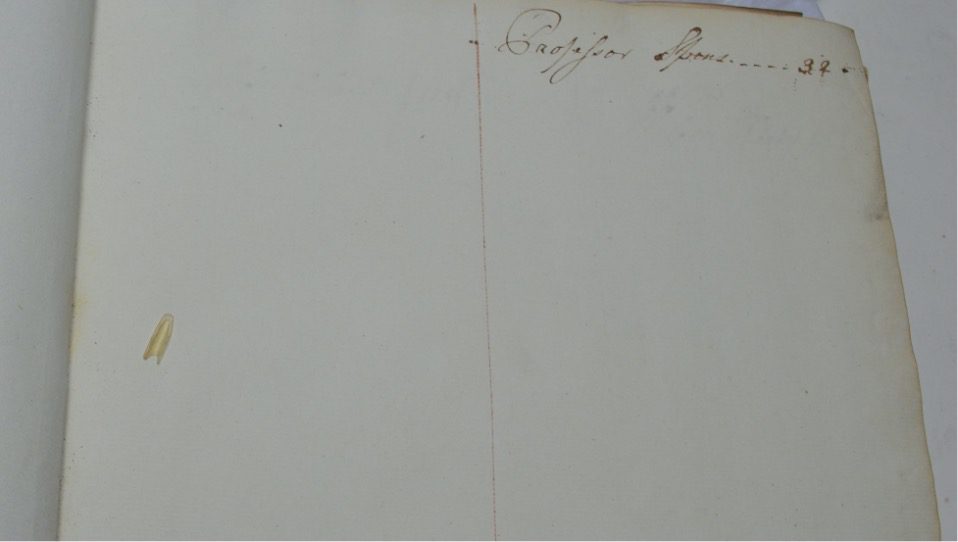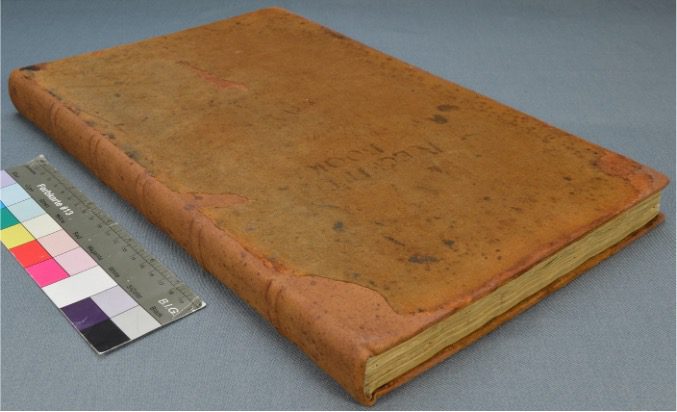University of St Andrews, Libraries and Museums
Back to Grants for Conservation ProjectsGrant Scheme
Collections Care Stimulus Fund
Award Year
2021
Grant Sum Awarded
£1,035
Icon Accredited Conservator
Emma Fraser ACR

Details
Conservation treatment of UYLY206/3 Library borrowing register 1786-92
In November 2021, Icon accredited private book conservator Emma Fraser completed the conservation treatment of a Library receipt book (UYLY206/3), from the University of St Andrews Library Special Collections. Commission of the conservation work was enabled though a generous Collection Care Stimulus Fund award from the Radcliffe Trust in partnership with the Institute of Conservation.
St Andrews Stimulus grant video
Library receipt book (UYLY206/3) has now been restored to useable condition and is fit for digitisation and access in Special Collections’ reading room. As financial constraints due to Covid’s impact on the University have restricted availability of Library funds for out-sourced conservation work, treatment of the receipt book would not have been possible without the award. The conservation work has enabled the book to be used in a collaborative academic research project, revealed information about how the book was made and adapted a leather consolidation treatment recently presented at the 2021 online Icon Book and Paper Group Conference.

UYLY206/3 Library receipt book records the borrowings from the library of the University of St Andrews from 1786 and 1792, and is an integral part of a series of ledgers kept to record the borrowings of professors and others between 1773 and 1925. Together with the student receipt books (1768 to 1925), these include over 100,000 records of borrowings at St Andrews between 1750 and 1830. There has been much recent research interest in what former staff and students read while at university and what was borrowed by members of the local community from the University’s library. The rarity of such records and the extent of their survival at St Andrews makes them an invaluable source for varied subjects such as the circulation of printed music and the reading of novels
The Library receipt book was heavily used in daily business and is now a unique archival item, the only source for the information it contains. The book was however unfit for production due to the fragility of the sewing structure and binding.
‘Books and Borrowing 1750-1830: An Analysis of Scottish Borrowers’ Registers’ is a high profile and broad- ranging study which aims to reshape understanding of a key period in Scotland’s past by photographing, transcribing, analysing and publishing borrowing records from thirteen diverse libraries across Scotland. The project will create a valuable new resource for studying the histories of reading and the dissemination of ideas especially during the Scottish Enlightenment and Romanticism. UYLY206/3 Library receipt book is now in a fit condition to be captured digitally for this significant study.

The conservation treatment aimed to stabilise the Library receipt book to enable digitisation and access while retaining as much original material as possible. UYLY206/3 is a full leather, tight back binding in reverse calf over mill boards, sewn on five laced cords. The text block comprises of handmade, watermarked laid paper supporting iron gall ink manuscript and ruled red lines.
The volume suffered severe structural damage as the sewing and spine were split in the middle of the volume, and several sections and pages had become loose. Although the boards were still attached, the outer joints were split and some laced sewing supports had broken. During examination and documentation of the hand- sewn endbands, the paper cores made of printer’s waste were recorded. Documentation of the volume also revealed a quill shaving in the text block gutter suggesting at least part of the book was written in its current binding. Sections preceding the opening where the quill shaving was found support iron gall manuscript which is very close to the foredge and in at least one instance partially trimmed off. This might suggest that the current binding is not the original binding or format. The records may have been loose folios or pamphlets and were bound together and trimmed at later stage.

After documentation and mechanical cleaning, the reverse calf leather covering material was consolidated with a 1% solution of Klucel G in IMS using a pressurised spray.
Inspired by Ilaria Camerini’s thesis project at the University of Rome, which was presented at the online Icon Book & Paper Group conference held in October 2021, Emma Fraser used this treatment on the binding cover. An alternative and less interventive option to consolidation would have been the construction of Melinex® dust jacket to minimise the transfer of leather dust, associated with reverse calf leather, during handling. However, a Melinex® dust jacket can make handling awkward. Spraying consolidant is a practical solution for reverse calf. The intensive handling required for digitisation can be carried out safely without transfer of leather dust to the text block.

As initial attempts to reinforce the sewing structure with new supports and to resew the loose sections were unsuccessful, it was decided to dis-bind the volume and resew all sections to create a more secure structure. The thin degraded leather on the spine proved too fragile to lift intact, even with the aid of a tissue facing attached with Klucel G. The volume was resewn on linen tape supports with linen thread sewn through the original holes. Transverse spine linings of multiple layers of Japanese paper were adhered with wheat starch paste. The extended slips of the first layers of the transverse linings were attached to the boards, while the subsequent layers were used to form a shaped hollow formed over the supports. The frayed ends of the sewing supports were attached to the boards under the lifted leather adhered with wheat starch paste.
Changing the volume from its original tight back to a shaped hollow enables the binding to open flatter, making digitisation easier. This is helped by the fact that the supports are not covered with adhesive or linings thus maintaining flexibility.


